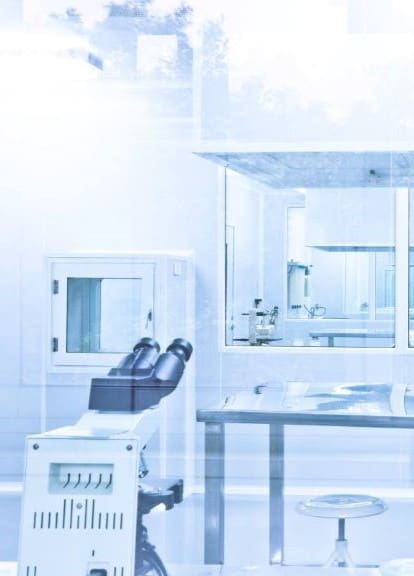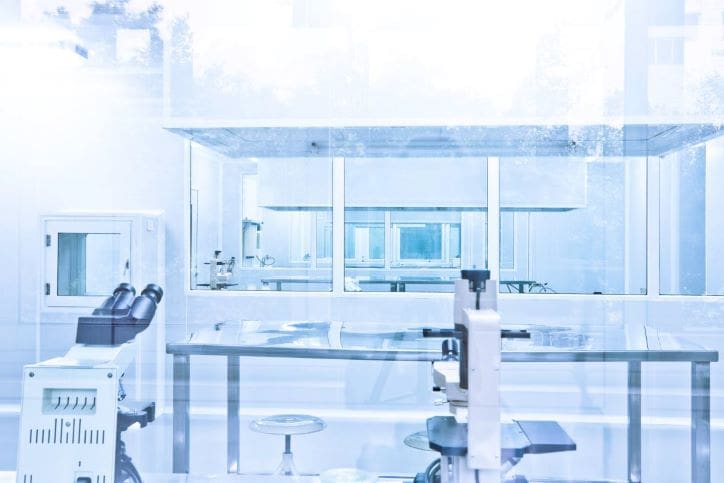What is automated chemistry?
Automated chemistry utilises automated systems and technologies such as chemical synthesis, high-throughput drug screening, liquid chromatography-mass spectrometry, and immunoassays. It involves the integration of robotics, software, and advanced instruments to streamline and enhance the efficiency of chemistry workflows.
Automation is becoming increasingly popular in chemistry labs, particularly in clinical chemistry labs 1–3. and chemistry automation techniques can be applied to several key processes 4,5, including:
- Sample handling and processing: Chemistry lab automation can handle and process patient samples, including labelling, sorting, and preparation of samples for further analysis
- Analysis: Various analytic techniques, such as spectrophotometry, chromatography, and immunoassays, can be automated
- Quality control: Fully automated chemistry can be employed for quality control procedures, such as validating procedures, calibrating equipment, and monitoring instrument performance. This ensures that systems are producing reliable results, and may be required to produce reports in compliance with regulatory requirements
- Data management: Chemistry automation systems often include integrated software for data management and analysis, facilitating data management, storage, and analysis
Why is automation important in clinical chemistry?
Automated systems are becoming increasingly popular in clinical chemistry labs due to several advantages 6, including:
- Precisely controlled experiments: Automated chemistry allows sensitive chemical reactions, that might otherwise be affected by small changes in reaction conditions, to be tightly controlled
- Reliable results: Precisely controlled reactions, minimised human error, and highly reproducible experiments lead to more accurate, reliable results. This is particularly important in clinical chemistry laboratories that are required to follow strict guidelines and regulations
- Safer working conditions: Fully automated chemistry reduces the risk of laboratory accidents. Alarms warn users of the risk of accidents, and limits can be set so that systems automatically shut down if conditions are outside a certain range
- Increased scalability 7: Automation in clinical chemistry allows reactions to be scaled up since automated systems can handle multiple samples concurrently. This can be useful in laboratories that process many patient samples daily
- Reduced downtime and increased productivity: Chemistry workflows can be complex, multistep processes that require many adjustments throughout a lengthy procedure. Automated systems handle these adjustments, freeing up lab users for other tasks. Moreover, automation reduces unplanned downtime due to staff absences and can operate outside of normal working hours. This not only saves time but also saves money in the long run
Challenges of automation in chemistry
Despite the potential of automation to revolutionise chemistry laboratories, it is still in its infancy, and several challenges remain, including:
- Cost: Automation systems often involve substantial upfront costs for equipment, software, and infrastructure modifications. However, it is crucial to consider the long-term costs saved by implementing automated systems in terms of researcher productivity, scalability, and fewer failed experiments due to human error
- Space availability: Automated systems can be large and require space that labs may not have. Automata’s adaptable LINQ hardware has the same footprint as a standard lab bench and can be easily configured into existing lab spaces
- Complexity: Implementing automation in a chemistry laboratory requires technical expertise and knowledge. Setting up and maintaining automated systems can be complex, requiring specialised training. Automata’s project team and automation scientists offer ongoing support for Automata system users, working closely with users to help them make the most of their system. Moreover, LINQ Cloud, LINQ’s proprietary software, is simple enough that any team member can design and run automated workflows with minimal training and no coding experience
- Compatibility: Integrating automation systems with existing laboratory equipment and software can be challenging. Compatibility issues may arise when attempting to connect different instruments or data management systems. The Automata LINQ bench system’s modular design allows it to be adapted to existing workflows and integrated with existing instruments
- Adaptability and scalability: Laboratories use various evolving methods and technologies. Therefore, automation systems need to be able to adapt to the needs of the lab. The modular design of the LINQ bench allows it to be easily adapted or scaled to match the growing needs of any chemistry lab
Overall, automation is a practical solution to various challenges in clinical chemistry labs today. It can reduce error, enhance precision and accuracy, and increase productivity. Automata’s LINQ platform offers the perfect solution to clinical chemistry labs looking to automate their procedures and overcomes many of the hurdles associated with automation.
LINQ: A new open, integrated laboratory automation platform
Our new open, integrated automation solution – LINQ – features a unique laboratory bench, with integrated automation capabilities and accompanying powerful, proprietary lab orchestration software.
As a result, labs can easily reduce human touchpoints and increase efficiency and accuracy without needing to dedicate additional lab space to bulky equipment.
References
1. Sanderson K. Automation: Chemistry shoots for the Moon. Nature. 2019;568(7753):577-579. doi:10.1038/d41586-019-01246-y
2. Li J, Ballmer SG, Gillis EP, et al. Synthesis of many different types of organic small molecules using one automated process. Science. 2015;347(6227):1221-1226. doi:10.1126/science.aaa5414
3. Jiang T, Bordi S, McMillan AE, et al. An Integrated Console for Capsule-Based, Fully Automated Organic Synthesis. Chemistry; 2019. doi:10.26434/chemrxiv.7882799.v1
4. Armbruster DA, Overcash DR, Reyes J. Clinical Chemistry Laboratory Automation in the 21st Century – Amat Victoria curam (Victory loves careful preparation). Clin Biochem Rev. 2014;35(3):143-153.
5. Liu J, Hein JE. Automation, analytics and artificial intelligence for chemical synthesis. Nat Synth. 2023;2(6):464-466. doi:10.1038/s44160-023-00335-1
6. Streitberg GS, Bwititi PT, Angel L, Sikaris KA. Automation and Expert Systems in a Core Clinical Chemistry Laboratory. J Assoc Lab Autom. 2009;14(2):94-105. doi:10.1016/j.jala.2008.12.0017.
7. Selekman JA, Qiu J, Tran K, et al. High-Throughput Automation in Chemical Process Development. Annu Rev Chem Biomol Eng. 2017;8(1):525-547. doi:10.1146/annurev-chembioeng-060816-101411

